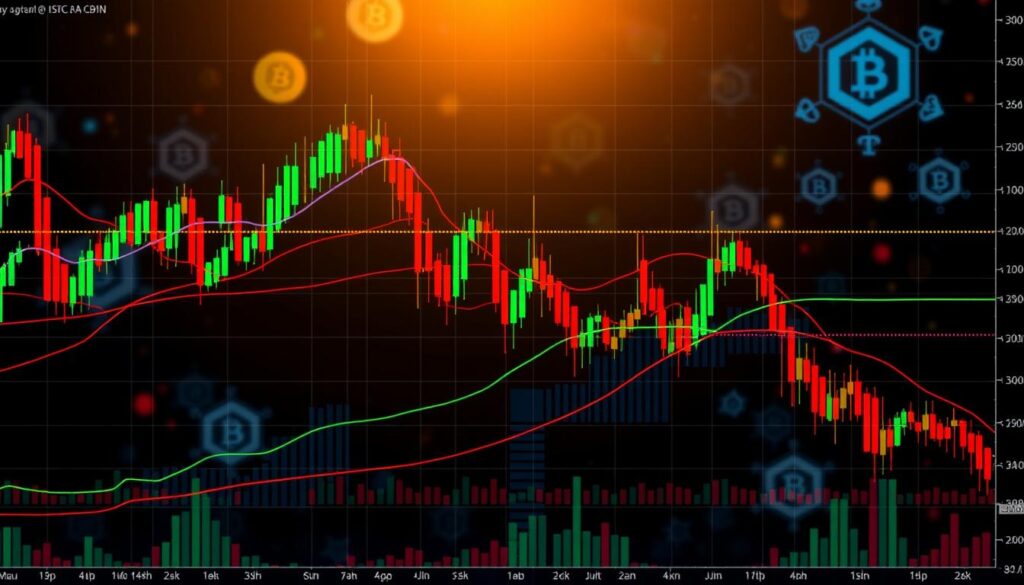Investing in crypto can be a thrilling experience, but it comes with its own set of risks. To mitigate these risks, it’s essential to have a solid risk management strategy in place. One crucial tool for managing crypto trading risks is the stop-loss order. A stop-loss order is designed to limit losses on a position by automatically selling an asset when its price reaches a predetermined level. This helps prevent further loss if the market moves unfavorably, making it a vital component of any crypto investment strategy. Effective risk management is critical for protecting your crypto investments, and stop-loss orders play a significant role in this process.
By incorporating stop-loss orders into your trading plan, you can better manage your crypto investments and reduce potential losses. Stop-loss orders are available on various trading platforms, including the Crypto.com Exchange, where you can set them for market orders and derivative products like Strike and UpDown Options. Understanding how to set stop-loss orders and take-profit levels is crucial for risk management in trading, as it allows you to limit losses and lock in profits. Setting appropriate stop-loss and take-profit levels is vital for maintaining a favorable risk/reward ratio and adjusting to new support and resistance levels.
Table of Contents
Key Takeaways
- Stop-loss orders help limit losses on a position by automatically selling an asset when its price reaches a predetermined level.
- Effective risk management is critical for protecting your crypto investments, and stop-loss orders play a significant role in this process.
- Stop-loss orders are available on various trading platforms, including the Crypto.com Exchange.
- Setting appropriate stop-loss and take-profit levels is vital for maintaining a favorable risk/reward ratio and adjusting to new support and resistance levels.
- Stop-loss orders can be set as a percentage of trading capital, with values typically ranging from 1% to 5%, based on individual risk appetite.
- Adjusting stop-loss and take-profit orders over time is recommended in response to market fluctuations and evolving trading strategies.
Understanding Stop-Loss Orders in Cryptocurrency Trading
In the context of cryptocurrency trading, a stop-loss order is a crucial risk management tool. It allows traders to limit their potential losses by automatically selling a cryptocurrency when it reaches a certain price. For instance, if you purchase a cryptocurrency at $100 and set a stop-loss order at $90, the order will trigger a sale if the price drops to that level.
This mechanism is essential in crypto markets, where prices can fluctuate rapidly. By setting a stop-loss order, traders can protect their investments from significant downturns without constantly monitoring the market. There are different types of stop-loss orders available, including basic stop-loss orders and trailing stop-loss orders, each serving distinct functions in trading.
Some key aspects of stop-loss orders in cryptocurrency trading include:
- Automated risk management: Stop-loss orders help traders manage risks and enhance trade executions in the volatile cryptocurrency market.
- Limiting losses: Stop-loss orders are set to prevent further losses by selling an asset when the price hits a pre-determined level.
- Flexibility: Traders can use trailing stop-loss orders to adjust their stop-loss levels as the market moves.
By understanding how stop-loss orders work in crypto markets, traders can better navigate the complexities of cryptocurrency trading and make more informed decisions to protect their investments.
| Order Type | Description |
|---|---|
| Stop-Loss Order | A conditional directive to close an existing order when a specific price level is reached. |
| Trailing Stop-Loss Order | A stop-loss order that adjusts its stop-loss level as the market moves. |
Why Risk Management Matters in Crypto Trading
Crypto risk management is crucial for traders to navigate the highly volatile cryptocurrency market. Market volatility can lead to significant losses if not managed properly. Trading discipline is essential to maintaining a successful investment strategy, and crypto risk management tools such as stop-loss orders can help achieve this.
A well-planned trading discipline involves setting clear goals, assessing risk tolerance, and using tools like stop-loss orders to limit potential losses. By incorporating crypto risk management into their strategy, traders can avoid emotional decision-making and stay focused on their long-term objectives. Market volatility can be mitigated by using stop-loss orders, which allow traders to exit positions at predetermined price levels, thereby limiting potential losses.
- Minimizing emotional influences on trading decisions
- Mitigating potential losses due to market volatility
- Enhancing trading discipline by setting clear goals and risk tolerance
By prioritizing crypto risk management and maintaining a disciplined approach to trading, investors can better navigate the complexities of the cryptocurrency market and achieve their investment goals.
| Risk Management Tool | Description |
|---|---|
| Stop-Loss Orders | Automated orders to limit potential losses |
| Position Sizing | Calculating optimal position size based on risk tolerance |
| Dollar-Cost Averaging | Regularly investing a fixed amount to mitigate market volatility |
Benefits of Using Stop-Loss Orders
Stop-loss orders offer numerous benefits to traders, particularly in the realm of trading psychology. By setting a stop-loss order, traders can automate the process of limiting losses, thereby reducing the emotional stress associated with potential losses. This allows traders to focus on their overall portfolio management strategy, rather than constantly monitoring the market.
One of the key advantages of stop-loss orders is their ability to provide automated risk management. This means that traders can set a stop-loss order and allow it to execute automatically, even when they are not actively watching the market. This can be particularly useful for traders who are new to the market or who have limited experience with trading psychology.
Emotional Control in Trading
Stop-loss orders can help traders maintain emotional control by removing the need for constant market monitoring. This can be especially beneficial in volatile markets, where prices can fluctuate rapidly. By setting a stop-loss order, traders can limit their losses and prevent emotional decision-making.
Automated Risk Management
Automated risk management is a crucial aspect of successful trading. Stop-loss orders can help traders manage their risk by automatically executing a sell order when the price falls below a certain level. This can help prevent significant losses and protect traders’ investments.
Portfolio Protection Strategy
A well-planned portfolio management strategy is essential for long-term trading success. Stop-loss orders can play a key role in this strategy by providing a safety net against potential losses. By setting stop-loss orders, traders can protect their investments and maintain a balanced risk profile.
Overall, stop-loss orders offer a range of benefits to traders, from emotional control and automated risk management to portfolio protection. By incorporating stop-loss orders into their trading strategy, traders can improve their chances of success and achieve their investment goals.
How to Set Stop-Loss Orders in Crypto Trading
Implementing stop-loss orders is a crucial aspect of risk management in crypto trading. To set a stop-loss order, a trader identifies a price point where they no longer want to hold the position at that level. This may be a percentage of capital deployed, a specific price point, or a fixed total profit and loss (PnL). Position sizing plays a significant role in this process, as it helps determine the optimal amount of capital to allocate to a trade.
Step-by-Step Implementation Guide
When setting stop-loss orders, it’s essential to consider price level selection. This involves choosing a price point that balances the need to limit losses with the potential for profit. A well-placed stop-loss order can help traders avoid significant losses and protect their investments. By combining position sizing with careful price level selection, traders can create a robust risk management strategy.
Some popular platforms, such as Crypto.com and GoodCrypto, offer advanced trading features and tools that make it easy to set stop-loss orders. These platforms provide a unified and intuitive trading interface, allowing traders to manage their risk and maximize their profits. With the right tools and a solid understanding of implementing stop-loss orders, traders can navigate the volatile world of crypto trading with confidence.
Choosing the Right Position Size
To choose the right position size, traders need to consider their overall risk tolerance and investment goals. This involves assessing the potential risks and rewards of a trade and allocating capital accordingly. By combining position sizing with careful price level selection, traders can create a balanced and effective trading strategy.
| Platform | Stop-Loss Features |
|---|---|
| Crypto.com | Trailing stop-loss, stop-limit orders |
| GoodCrypto | Advanced trading functionality, automated trading strategies |
Common Stop-Loss Strategies for Cryptocurrencies
When it comes to crypto trading strategies, a well-planned stop-loss order can make all the difference. This is because it helps to minimize losses and maximize gains, ultimately affecting the risk-reward ratio. There are several common stop-loss strategies used in cryptocurrency trading, each with its own set of advantages and disadvantages.
A key aspect of these strategies is market analysis, which involves studying market trends and patterns to determine the best stop-loss levels. Some traders prefer to use a fixed price point, while others opt for a percentage-based approach. More advanced traders may use the ATR (Average True Range) method, which takes into account market volatility.
Some popular stop-loss strategies include:
- Regular Stop Loss: Suitable for conservative traders with a set risk threshold.
- Trailing Stop Loss: Ideal for active traders in a bullish market.
- Guaranteed Stop Loss: Best for traders seeking maximum protection in volatile markets.
By understanding and implementing these strategies, traders can better manage their risk and improve their overall trading performance. Whether you’re a beginner or an experienced trader, it’s essential to find a stop-loss strategy that works for you and your trading goals.
Technical Analysis and Stop-Loss Placement
When it comes to setting stop-loss orders, technical analysis plays a crucial role in determining the optimal placement. By analyzing charts and identifying key levels of support and resistance, traders can make informed decisions about where to set their stop-loss orders. For instance, if a trader is long on a particular cryptocurrency, they may set their stop-loss just below a key support level, such as a recent low or a moving average.
Moving averages are a popular tool used in technical analysis to identify trends and determine stop-loss levels. By using a combination of short-term and long-term moving averages, traders can gauge the strength of a trend and set their stop-loss accordingly. For example, a trader may use a 50-day moving average as a stop-loss level, with the idea of closing the position if the price falls below this level.
Some common methods for setting stop-loss orders include the percentage method, the support method, and the moving average method. The percentage method involves setting the stop-loss at a specific percentage below the purchase price, while the support method requires identifying key support levels and setting the stop-loss just below these levels. The moving average method, on the other hand, involves using moving averages to determine the stop-loss level.
By combining technical analysis with a solid understanding of support and resistance levels, traders can develop a robust strategy for setting stop-loss orders. This approach can help minimize losses and maximize gains, making it an essential tool for any serious trader. Whether using moving averages or other technical indicators, the key is to stay informed and adapt to changing market conditions.
Psychology Behind Successful Stop-Loss Implementation
Successful stop-loss implementation is deeply rooted in trading psychology. It requires a trader to have emotional discipline and a clear understanding of their risk tolerance. When traders set stop-loss orders, they must consider the potential for market volatility and the impact it can have on their trades.
A key aspect of trading psychology is the ability to manage emotions and make rational decisions. This includes avoiding common pitfalls such as the disposition effect, where traders hold onto losing investments and sell winning ones early. By understanding their own emotional biases and risk tolerance, traders can develop strategies to overcome these challenges and make more informed decisions.
Some strategies for developing emotional discipline include:
- Setting clear goals and risk management plans
- Practicing self-awareness and recognizing emotional triggers
- Developing a consistent trading routine
By combining these strategies with a deep understanding of trading psychology and risk tolerance, traders can improve their chances of success and make more informed decisions in the market.
Advanced Stop-Loss Techniques
For experienced traders, implementing advanced trading techniques can significantly enhance their risk management strategies. One such technique is the trailing stop-loss, which adjusts the stop price as the asset rises, locking in profits while still offering protection against losses. This approach allows traders to capitalize on favorable market movements while minimizing potential downsides.
Time frame analysis is another crucial aspect of advanced stop-loss techniques. By analyzing different time frames, traders can identify key support and resistance levels, enabling them to set more effective stop-loss orders. This approach helps traders to better understand market trends and make more informed decisions.
Some key considerations for advanced stop-loss techniques include:
- Trailing stop-loss orders to lock in profits
- Multiple time frame analysis to identify support and resistance levels
- Risk-reward ratios to balance potential profits and losses
By incorporating these advanced trading techniques into their strategy, traders can refine their risk management approach and improve their overall trading performance. It’s essential to remember that each trader’s needs and goals are unique, and the most effective approach will depend on their individual circumstances and market conditions.
Common Mistakes to Avoid When Setting Stop-Losses
When it comes to setting stop-losses, traders often fall into common pitfalls that can significantly impact their trading performance. One of the primary trading mistakes is setting stops too tightly, which can result in premature stop-outs even when the trade eventually moves in a favorable direction. This is particularly problematic in times of high market volatility, where price fluctuations can be more pronounced.
To avoid this, it’s essential to consider the importance of proper stop-loss placement and adjust your strategy accordingly. Some key considerations include:
- Placing stops too far can require a substantial pip movement to reach a profitable level, potentially decreasing the reward-to-risk ratio.
- Setting stops directly on support or resistance levels can be counterproductive, instead, it’s recommended to position stops slightly beyond these levels to confirm breach and avoid premature exits.
Another critical aspect to consider is the impact of emotional trading on stop-loss placement. Traders who let emotions dictate their decisions may override their stop-losses, leading to significant losses. To mitigate this, it’s crucial to develop a robust trading plan and stick to it, avoiding the temptation to make impulsive decisions based on emotions.
By being aware of these common mistakes and taking steps to avoid them, traders can develop a more effective stop-loss strategy that helps minimize losses and maximize gains. Remember, a favorable risk-to-reward ratio, such as 2:1, can make profitability more attainable when trading accurately at least half the time.
Stop-Loss Orders Across Different Trading Platforms
When it comes to crypto exchanges and trading platforms, the implementation of stop-loss orders can vary significantly. Understanding the different types of order types available on various platforms is crucial for effective risk management. For instance, both stop-loss and take-profit orders can be set on the Crypto.com Exchange for market orders and in the Crypto.com App for derivatives products.
A review of over 20 exchanges identified the ones offering the best stop-loss and trailing stop features. Some notable trading platforms include BYDFi, Phemex, and MEXC, each with its unique features and fees. For example, MEXC stands out for having zero maker fees and over 1400 altcoins available for trade.
Traders should consider the different order types available on each platform, such as stop-limit orders and trailing stops, when choosing a trading platform. By understanding the features and fees of various crypto exchanges, traders can make informed decisions and effectively manage their risk.
Market Conditions and Stop-Loss Adjustment
As market trends and trading conditions evolve, it’s essential to adapt your strategy to maximize gains and minimize losses. In a bull market, traders may use wider stops and trailing stop-losses to ride the uptrend, while in a bear market, tighter stops and capital preservation become crucial.
In a sideways or ranging market, stop-losses might be set based on support and resistance levels. The concept of dynamic stop-loss adjustment is vital, as it involves regularly reviewing and modifying stop-loss levels to respond to changing market conditions.
Some key considerations for stop-loss adjustment include:
- Monitoring market trends and adjusting stop-loss levels accordingly
- Using technical analysis tools, such as moving averages and support/resistance levels, to inform stop-loss placement
- Implementing trailing stop-loss orders to lock in profits while allowing for some price fluctuations
By adapting your strategy to the current market conditions and trading conditions, you can better navigate the complexities of the cryptocurrency market and make more informed trading decisions. Effective strategy adaptation is critical to success in this field.
Building a Complete Risk Management System
A complete risk management system is essential for successful cryptocurrency trading. This involves creating a trading plan that includes risk management strategies, such as stop-loss orders, position sizing, and portfolio diversification.
A well-structured trading plan helps traders make informed decisions and avoid impulsive actions. It also enables them to manage their risk exposure and mitigate potential losses. Some key elements of a trading plan include:
- Defining trading goals and objectives
- Conducting market analysis and research
- Developing a risk management strategy
- Creating a portfolio diversification plan
By implementing a complete risk management system, traders can limit their losses, maximize their profits, and improve their overall trading outcomes. This is especially important in the crypto market, which is characterized by high volatility and unpredictability. With a proactive approach to risk management, traders can stay ahead of the game and achieve their trading goals.
Regular performance review and strategy adjustment are also crucial components of a complete risk management system. Traders should regularly review their trading results, identify areas for improvement, and refine their risk management strategies accordingly. By doing so, they can ensure that their trading plan remains effective and aligned with their goals.
| Risk Management Strategy | Description |
|---|---|
| Stop-Loss Orders | Automated orders that sell a security when it falls to a certain price |
| Position Sizing | Technique used to determine the optimal amount of capital to allocate to a trade |
| Portfolio Diversification | Strategy that involves spreading investments across different asset classes to reduce risk |
Conclusion
As we conclude this comprehensive guide, it’s clear that mastering the use of stop-loss orders is a critical skill for any successful crypto trader. By strategically implementing crypto risk management techniques like stop-losses, you can protect your investments, maintain trading discipline, and work towards your long-term investment protection goals.
Throughout this article, we’ve explored the mechanics of stop-loss orders, their various types, and the benefits they offer in terms of emotional control, automated risk management, and portfolio protection. We’ve also delved into the technical analysis strategies and psychological factors that underpin effective stop-loss implementation.
Remember, stop-loss orders are not a guarantee against losses, but rather a valuable tool in your trading arsenal. By continuously learning, adapting your strategies, and maintaining a disciplined approach, you can leverage stop-losses to navigate the volatile crypto markets and maximize your chances of long-term success.
FAQ
What is a stop-loss order?
A stop-loss order is a type of order that automatically sells an asset when the price reaches a predetermined level, helping traders limit potential losses and maintain control over their portfolios.
How do stop-loss orders work in the cryptocurrency market?
Stop-loss orders are particularly relevant in the volatile crypto market, as they allow traders to automatically sell assets when prices reach a specific level, preventing further losses.
What are the different types of stop-loss orders available to traders?
Traders can choose from various types of stop-loss orders, such as basic stop-loss orders and trailing stop-loss orders, each offering different functionalities and risk management benefits.
Why is risk management important in cryptocurrency trading?
Proper risk management, including the use of stop-loss orders, is crucial in the crypto market due to its high volatility and 24/7 operation, helping traders maintain discipline and protect their investments.
What are the benefits of using stop-loss orders in crypto trading?
Stop-loss orders can provide emotional control, automated risk management, and overall portfolio protection, contributing to long-term trading success.
How do I set stop-loss orders in crypto trading?
Implementing stop-loss orders involves a step-by-step process, including accessing the order menu on trading platforms, considering position size, and setting appropriate price levels based on factors like market volatility and personal risk tolerance.
What are some common stop-loss strategies used in cryptocurrency trading?
Traders can employ various stop-loss strategies, such as the fixed price point, percentage-based, and ATR (Average True Range) methods, each with its own pros and cons.
How can technical analysis be used to inform stop-loss placement?
Identifying and utilizing support and resistance levels, moving averages, and volatility-based indicators can help traders set more effective stop-loss orders in the crypto market.
What are the psychological aspects of implementing and adhering to stop-loss orders?
Developing emotional discipline, understanding personal risk tolerance, and overcoming common emotional pitfalls are crucial for successfully implementing and sticking to stop-loss orders.
What are some advanced stop-loss techniques for experienced crypto traders?
More advanced stop-loss strategies include the use of trailing stop-loss orders, multiple time frame analysis, and considering risk-reward ratios to enhance trading performance.
What common mistakes should traders avoid when setting stop-loss orders?
Traders should be wary of setting stops too tightly, ignoring market volatility, and emotionally overriding stop-loss orders, as these mistakes can lead to significant losses.
How are stop-loss orders implemented across different crypto trading platforms?
Major cryptocurrency exchanges offer varying stop-loss order functionalities, and traders should compare and evaluate these features to choose the platform that best suits their trading needs.
How should stop-loss strategies be adjusted based on overall market conditions?
Traders should adapt their stop-loss strategies to accommodate different market conditions, such as using wider stops and trailing stop-losses in bull markets, tighter stops in bear markets, and support/resistance-based stops in sideways markets.
How do stop-loss orders fit into a comprehensive risk management system for crypto trading?
While stop-loss orders are crucial, they are just one component of a broader risk management approach that should also include a detailed trading plan, position sizing, and portfolio diversification.









